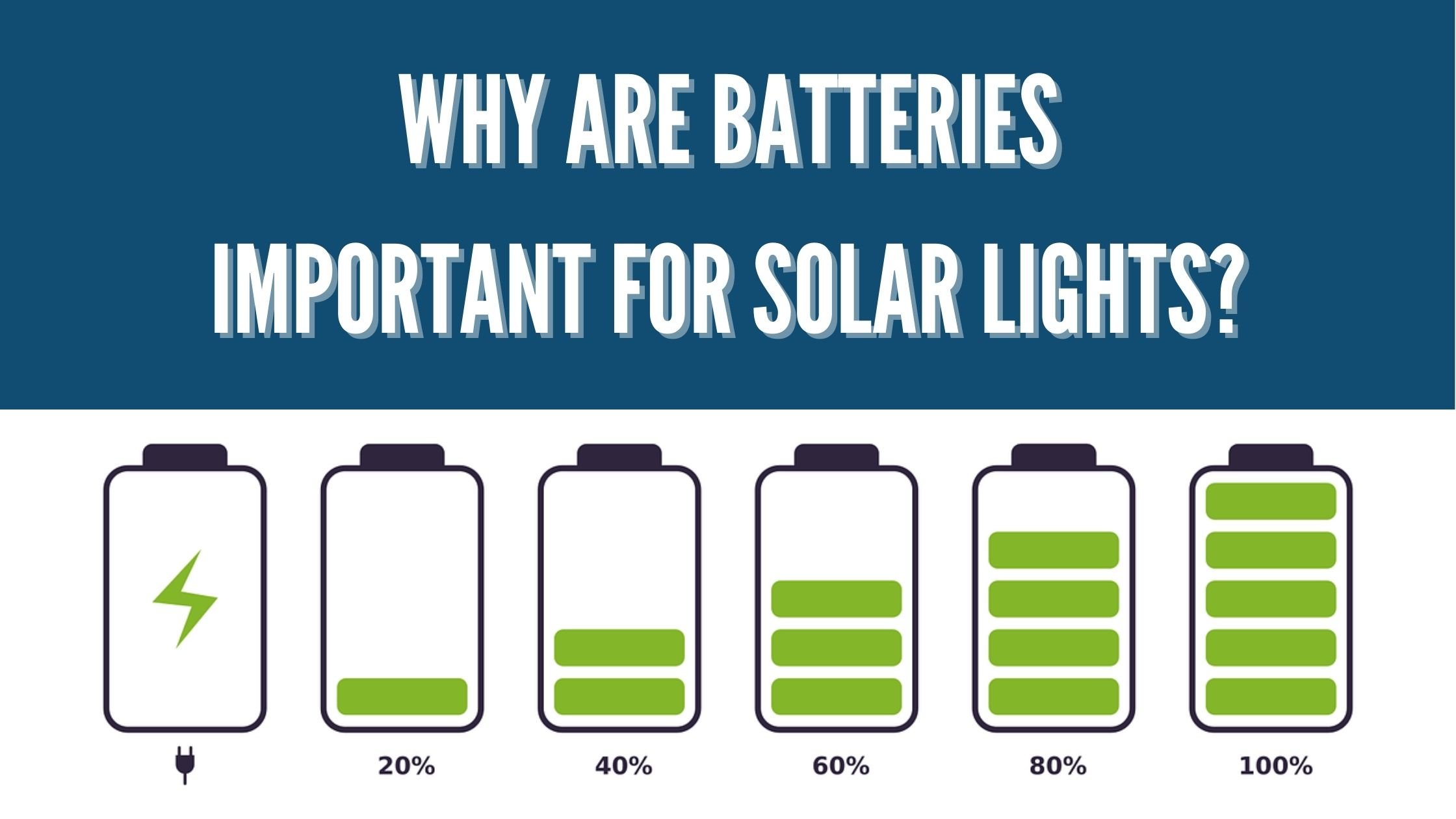What is Solar Lighting and Why are Batteries Important?

Contents
Solar lighting refers to lighting systems that use solar panels to convert sunlight into electricity, which is then stored in batteries for use at night or during times when there is little or no sunlight. These systems are used in a variety of applications, including street lighting, garden lighting, security lighting, and portable lighting for outdoor events.
Applications for Solar Lighting
Solar lighting systems are used in a variety of applications, including:
- Street lighting: Solar street lights are a popular choice for illuminating roads, streets, and highways in areas where it is difficult or expensive to run traditional electrical power lines. They are often used in rural or remote areas, or in areas where the electrical grid is unreliable. These lights are produced by large-scale manufacturers, such as SEPCO, and should be made to meet light level and operational requirements.
- Garden lighting: Solar-powered garden lights are popular for illuminating gardens, pathways, and outdoor spaces. They are easy to install and do not require a connection to the electrical grid. Most garden lighting, or lighting for around homes, are found at big box retailers and are only sized for a small light with very little or no backup.
- Security lighting: Solar-powered security lights are often used to deter burglars and other intruders. They can be installed around the perimeter of a property or in other strategic locations to provide additional security. Large scale lights for commercial properties or remote sites are typically from large manufacturers such as SEPCO, whereas there are smaller security lights from big box retailers for home security.
- Portable lighting: Solar-powered portable lights are often used for outdoor events like camping trips or concerts. They are convenient and easy to use, as they do not require a connection to the electrical grid. Specialty manufacturers produce these types of lights and are made to be towed behind vehicles on large carts to be transported as needed.
As you can see, solar lighting systems are used in a variety of applications, including street lighting, garden lighting, security lighting, and portable lighting for outdoor events. They are a popular choice in areas where it is difficult or expensive to run traditional electrical power lines, or in remote or off-grid locations.
Who uses solar lighting systems?
Solar lighting systems are often used in areas where it is difficult or expensive to run traditional electrical power lines due to factors such as distance, terrain, or the cost of materials. For example, it may be cost-prohibitive in rural or remote areas to run electrical power lines over long distances or through challenging terrain. In these cases, solar lighting systems can provide a practical and cost-effective alternative to traditional electrical lighting.
In addition to being used in areas where it is difficult or expensive to run traditional electrical power lines, solar lighting systems are also popular for lighting in remote or off-grid locations. These are areas where there is no connection to the electrical grid or the grid is unreliable. In these cases, solar lighting systems provide a convenient and reliable lighting source, as they do not require a connection to the electrical grid.
Overall, solar lighting systems can be a practical and cost-effective solution for lighting in areas where it is difficult or expensive to run traditional electrical power lines, or in remote or off-grid locations. They are a reliable and convenient way to provide lighting in these types of areas without the need for a connection to the electrical grid.
Comparison of Batteries
The batteries in a solar lighting system are used to store the electricity generated by the solar panels. This allows the system to operate at night or during periods of low sunlight, when the solar panels are not producing enough electricity to power the lights. The batteries also help to smooth out fluctuations in electricity production and ensure that the lighting system is able to operate consistently.
Several types of batteries are used in solar lighting systems, each with their own unique characteristics and benefits. Here is a comparison of four common types of batteries used in solar lighting systems:
- LifePO4 (Lithium Iron Phosphate) batteries: These are a type of lithium-ion battery that are known for their high energy density and long lifespan. They are also relatively lightweight and have a low self-discharge rate, which means they can hold their charge for a long time without losing much power. However, they are also more expensive than some other types of batteries.
- GEL cell batteries: These are a type of lead-acid battery that use a thick, gel-like electrolyte instead of a liquid. They are known for their low maintenance and high tolerance for deep discharge, which makes them well-suited for use in solar lighting systems. However, they are not as energy-dense as some other types of batteries, and they can be more expensive.
- AGM Glass Mat batteries: These are also a type of lead-acid battery, but they use a thin glass mat to hold the electrolyte in place. They are known for their low maintenance and good tolerance for deep discharge, and they are relatively lightweight and compact. However, they can be more expensive than some other types of batteries, and they may not have as long a lifespan as some other types.
- Nickel Cadmium (NiCd) batteries: These are rechargeable batteries known for their high energy density and long lifespan. They are also relatively inexpensive and have a low self-discharge rate, which means they can hold their charge for a long time without losing much power. However, they may be less environmentally friendly than some other types of batteries due to the use of cadmium, and they may not be as well-suited for use in solar lighting systems due to their relatively high internal resistance.
In summary, the best battery for a solar lighting system will depend on a variety of factors, including cost, energy density, lifespan, and maintenance requirements. It is important to carefully consider these factors when choosing a battery for your solar lighting system.
How Weather and Geography Affect Batteries
Weather and geographical location can be important factors to consider when choosing the correct battery type for a solar lighting system. Here are a few things to consider:
- Temperature: The performance and lifespan of a battery can be affected by temperature. For example, some types of batteries may perform poorly in extremely cold or hot temperatures, such as lithium. In cold climates, it may be beneficial to use a battery with a high cold cranking amp (CCA) rating, as this indicates the battery's ability to start an engine in cold conditions, such as a GEL cell battery.
- Humidity: High humidity can cause some types of batteries to corrode or malfunction. If the solar lighting system is installed in an area with high humidity, choosing a battery with good corrosion resistance may be beneficial. Housing the battery inside a box can help with corrosion resistance as well.
- Altitude: The performance of a battery can also be affected by altitude. At higher altitudes, there is less oxygen in the air, which can cause some types of batteries to perform poorly. In these cases, choosing a battery with a high oxygen recombination efficiency may be advantageous.
- Solar resource availability: The amount of sunlight available in a given location can also be an important factor to consider when choosing a battery for a solar lighting system. In areas with low solar resource availability, choosing a battery with a high energy density may be valuable, as this will allow the system to store more energy in a smaller space.
Weather and geographical location can be important factors to consider when choosing the correct battery type for a solar lighting system. It is important to carefully consider these factors in order to choose a battery that is well-suited for the specific conditions in which the solar lighting system will be installed.
Why Battery Autonomy is Important
Battery storage is necessary for a solar lighting system because it allows the system to store excess energy produced during the day for use at night or during periods of low sunlight. The amount of battery storage required will depend on the length of time that the lighting system needs to operate without sunlight, as well as the power consumption of the lights.
A system with a 1-day backup will have a smaller battery capacity and be less expensive to install, but it will need to be recharged more frequently and may not be able to operate for extended periods of time without sunlight. This may be sufficient for a system that only needs to operate during the evenings or in areas with consistent sunlight. These lights will need to have the batteries replaced more often and are prone to failures when inclement weather occurs.
A system with a 3-day backup will have a larger battery capacity and be more expensive to install, but it will be able to operate for longer periods without sunlight and may be more suitable for areas with more variable or limited sunlight. This is perfect for installations using Lithium or other fast-charging batteries and will greatly extend the time between battery changes.
A system with a 5-day backup will have the largest battery capacity, but it will be able to operate for the longest periods without sunlight and may be necessary for areas with extreme weather conditions or long periods of cloud cover. This is perfect for AGM or GEL cell batteries and can handle extreme cold or hot conditions, unlike Lithium batteries. In addition, the maintenance is low on these setups and replacement costs can also be lower.
Overall, the choice of battery backup will depend on the specific needs and budget of the solar lighting system. It is important to carefully consider the length of time that the system needs to operate without sunlight and the power consumption of the lights in order to determine the appropriate battery capacity.
In summary, solar lighting systems use batteries to store the electricity generated by solar panels so that the lighting system can operate at night or during periods of low sunlight, and to help ensure consistent operation. Without the batteries, the solar system wouldn’t be able to function at night. And having enough storage is key to ensuring your system will last over time.

